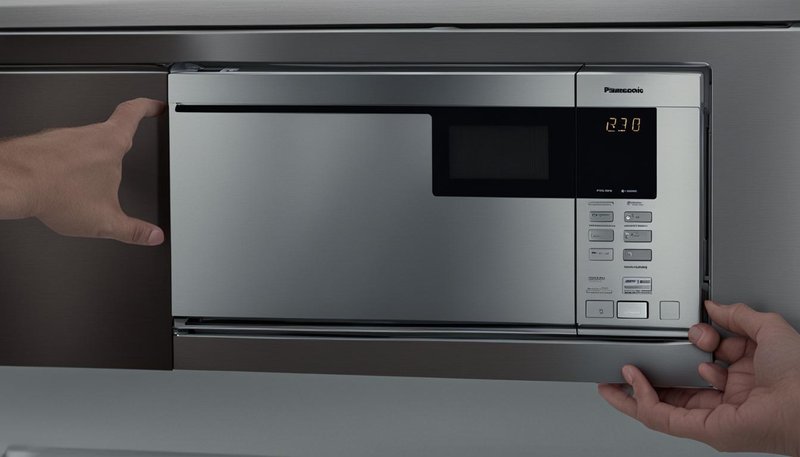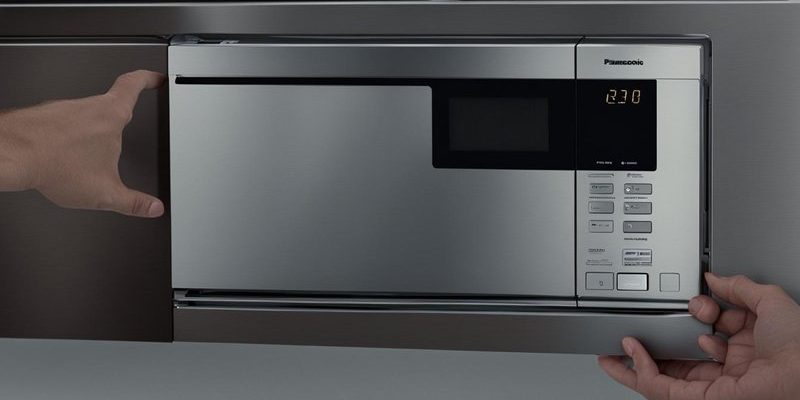
Error Code F1 typically indicates an issue with the microwave’s touchpad or control board. In simple terms, it’s like your microwave’s brain is feeling a bit under the weather. This can happen due to age, excessive moisture, or even power surges. Think of it like your computer freezing after too many programs are running at once. It’s something that you probably didn’t see coming, and it can leave you scratching your head in confusion. The good news is, there are ways to avoid this pesky error in the future, so you can keep your microwave running smoothly.
Understanding the F1 Error Code
The F1 error code can feel like a cryptic message from your microwave, but breaking it down is simpler than it seems. The control board in your Panasonic microwave functions like the motherboard of your computer. If it encounters a problem, it might display the F1 error as a way to signal for help. This is the microwave’s way of letting you know that something isn’t right.
Often, this error is caused by a malfunctioning touchpad. It’s as if the buttons on your microwave are having a bad day and choosing not to respond. This could be due to debris, a short circuit, or just regular wear and tear. It’s important to regularly clean the touchpad carefully with a soft cloth to prevent buildup that could affect its sensitivity. If you notice the touchpad acting finicky, that’s a clue that it needs your attention.
Power surges can also be a culprit for the F1 error. Just like a sudden spike in electricity can fry a circuit in your home, it can also disrupt the control board’s functioning. Using a surge protector can safeguard your microwave from unexpected electrical spikes. By understanding these underlying causes, you can address them promptly to ensure your microwave continues to function efficiently without interruptions.
Common Causes of F1 Error and How to Avoid Them
You might be wondering, “How do I make sure this doesn’t happen again?” The key lies in knowing what triggers the F1 error in the first place. As mentioned above, excessive moisture can wreak havoc on your microwave’s control board. Think of moisture like a slow-moving villain that quietly seeps into the electronics, causing chaos over time. To prevent this, ensure your kitchen is well-ventilated and avoid placing your microwave too close to steam-heavy appliances like the kettle or stove.
Another common cause is poor electrical connections. It’s similar to having a loose wire in your headphones that makes the sound cut in and out. The connections in your microwave can become loose over time, leading to errors. Regularly check your microwave’s power cord and outlet for any signs of wear or damage. If the cord feels warm or looks frayed, it’s time to replace it.
Additionally, improper handling during cleaning can lead to issues. Treat your microwave with the same care you would any delicate electronic. Harsh chemicals or too much water can damage the touchpad and control board. Stick to using a slightly damp cloth and gentle cleaners. By keeping these points in mind, you can prevent the F1 error code and extend the lifespan of your microwave.
Practical Tips for Routine Maintenance
Here’s the deal: routine maintenance is your best friend when it comes to keeping error codes at bay. You wouldn’t drive your car for years without an oil change, right? Similarly, your microwave needs a little TLC to stay in top shape. Start by making a habit of cleaning the interior and exterior regularly. Any food splatters or grime should be wiped away promptly to prevent them from affecting the microwave’s sensors.
Consider scheduling a monthly check-up for your microwave where you inspect the door seal and hinges. Just like a fridge door that doesn’t seal properly can let cold air escape, a faulty microwave seal can lead to inefficiencies and even errors. Ensure the door closes tightly and that there are no visible cracks or damages.
Lastly, be mindful of power usage. Avoid overloading your microwave with high-voltage demands or operating it too frequently in quick succession. This can overheat the control board, similar to how a phone gets hot after prolonged use. Give your appliance short breaks between uses to allow it to cool down. By incorporating these preventative measures, you’re setting up your microwave for long-term success.
What to Do If You Encounter the F1 Error
If you find yourself facing the F1 error despite your best efforts, don’t panic. Your first step should be a simple reset. Unplug the microwave from the outlet, wait a minute, and then plug it back in. This can sometimes clear temporary glitches, much like restarting a computer resolves a frozen screen.
If resetting doesn’t work, it may be time to delve deeper. Look for any visible problems like worn-out wires or damage to the touchpad. If you’re not confident in handling electronics, it might be best to call in a professional. Think of it like calling a mechanic for a car issue you can’t fix on your own. Sometimes a skilled hand is needed to diagnose and repair the problem.
For those who are handy with tools, replacing the control board or touchpad might be an option. However, keep in mind that this isn’t a simple task and requires careful handling to avoid further damage. If all else fails, and the error persists despite your efforts, consulting Panasonic’s customer service or bringing your appliance to an authorized service center is the way to go.
In conclusion, preventing the F1 error code on your Panasonic microwave boils down to understanding the causes and taking proactive measures. Regular maintenance, careful cleaning, and mindful usage can keep your appliance running smoothly. And when in doubt, professional help is just a call away. Now, with these tips, you can enjoy hassle-free cooking and keep those pesky error codes at bay.
